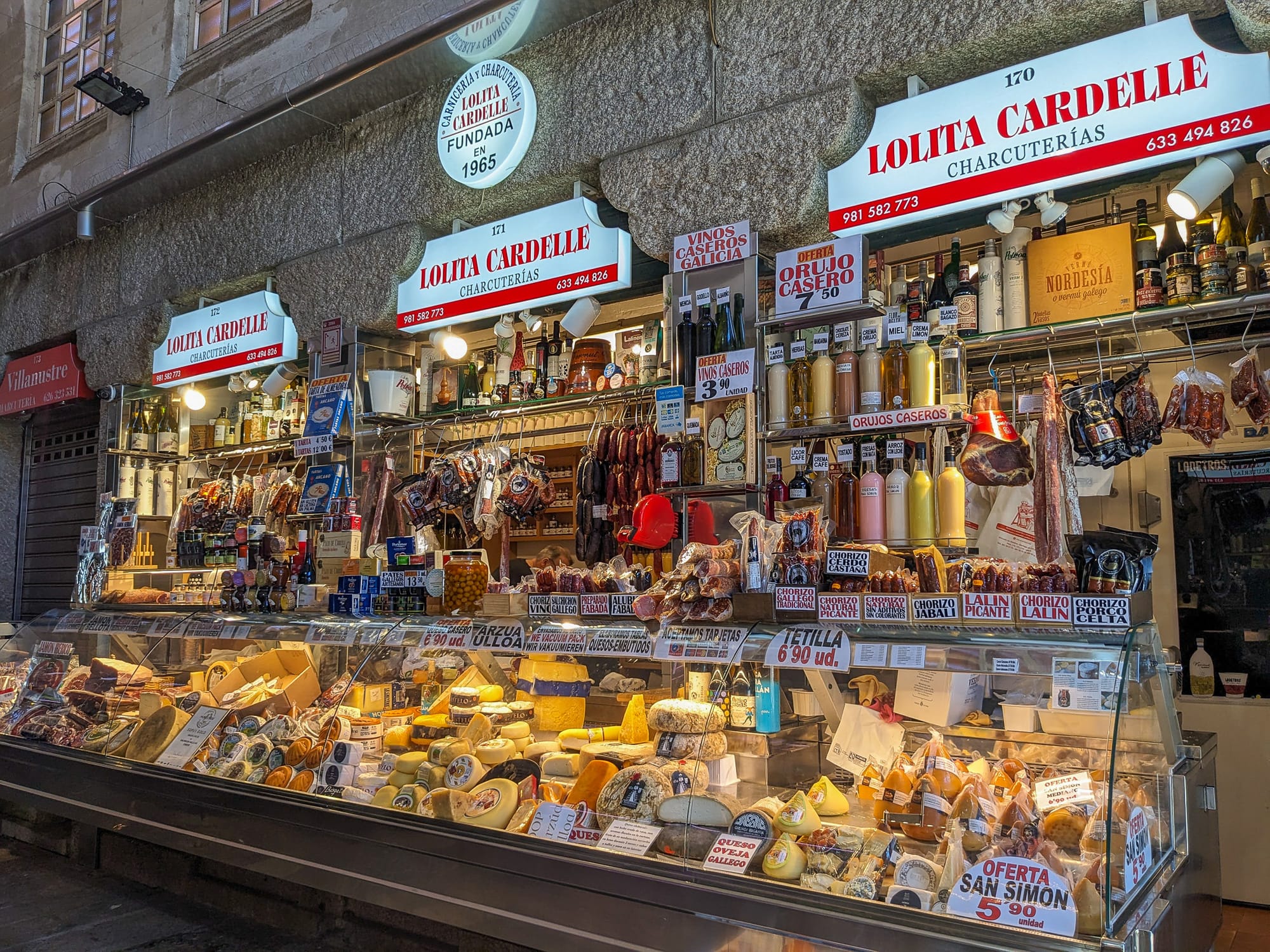Galicia Road Trip Day 1: Santiago
We spend the day in Santiago, home to the famous cathedral and endpoint of the Camino de Santiago pilgrimage.

After spending a weekend in Vigo earlier this year, visiting the other major cities of Galicia has been on our agenda for a while. Instead of doing it one by one, we decided to do a quick road trip over 4 days to check out 4 cities: Santiago de Compostela, Lugo, A Coruña and Pontevedra, in that order.
The drive from Porto to Santiago takes around two and a half hours if you stick to the highways. On both sides, these highways are very well maintained and usually there is very little traffic on them. If driving is not an option, you can also get there by train. There is a morning train going from Campanhã to Vigo, where you can connect to another train to Santiago. This would take around 5 hours.

After a comfortable drive, we reached Santiago just after noon. Thankfully, our hotel had our room ready, so we dropped our stuff and started looking for something to eat. We found a small but amazing restaurant called ArteSana, which we wrote about before:

Happy with our lunch, we walked through the residential and commercial area called Ensanche. This is the first area the city expanded out from its medieval limits, and its name literally translates to “expansion”. It’s very typical for a Spanish city of this size, with shops small and large, apartments, cafés with outside seats, and so on. It’s a good place to walk around in if you want to see how locals live.
Narrower streets and stone buildings welcomed us to the old city. It’s mostly closed to car traffic, and we’ve never seen so many people with hiking poles in one place. It’s not overcrowded, though, just busy in a nice, lively way. Probably helped that this was a Thursday. That is also why we started our trip in Santiago: Hotels get much more expensive from Friday to Sunday.


Streets of old town in Santiago
I won’t write much about the Camino de Santiago because I haven’t done any of it myself, and it’s a huge topic on its own. I hope to walk its entire length myself one day, but in the meantime, please keep in mind that its presence is always felt when you are in Galicia. More so in Santiago, with it being the final destination of the pilgrims. If you would like to read more about the Camino itself, here are some links to get you started:


The Santiago de Compostela Cathedral itself is the must-visit tourist attraction of the town. Its construction dates back to the 11th century. Its significance comes from the belief that Saint James, one of the apostles, is buried there, although that is probably not historically accurate. Here is a blog post that provides some light reading on this topic.







From the cathedral, we walked around the city some more to reach Mercado de Abastos. The market vendors were already closed by that time, except for a couple of charcuteries. The restaurants, on the other hand, were not only open, but packed. If we hadn’t already had our lunch, this would have been a nice place to sit down and grab some food.




My wife loves to try to find the best ice cream shop (or a heladeria as the Spanish call it) in every city we visit, and this was no exception. We stopped by a place called Sotto Zero to grab a couple of cups. It was pretty average, but it felt good on a hot day.


We made our way to the Parque da Alameda to first rest a little bit, and then to take in the great views of the old town it provides. The “As Duas Marias” sculpture is also found here. It’s colorful and fun until you read the history behind it, which I recommend you do. The Wikipedia article for it provides a short summary. It’s easy to forget how Portugal and Spain were under the thumb of tyrants until relatively recently, save for occasional reminders like this.




After a couple of hours resting in our hotel and a short nap for me, we walked back to the old town, this time for our dinner reservation at Casa Marcelo. I wrote about the superb experience we had there in a dedicated post:

With our bellies full, we took another long stroll through the city, which looks beautiful at dusk with the city lights on. Praza do Obradoiro was packed with tourists and locals alike. The highlight was a live band working the crowd with some songs they liked singing along to.
We enjoyed it ourselves for a while with them, before calling it a night and walked backed to our hotel.



